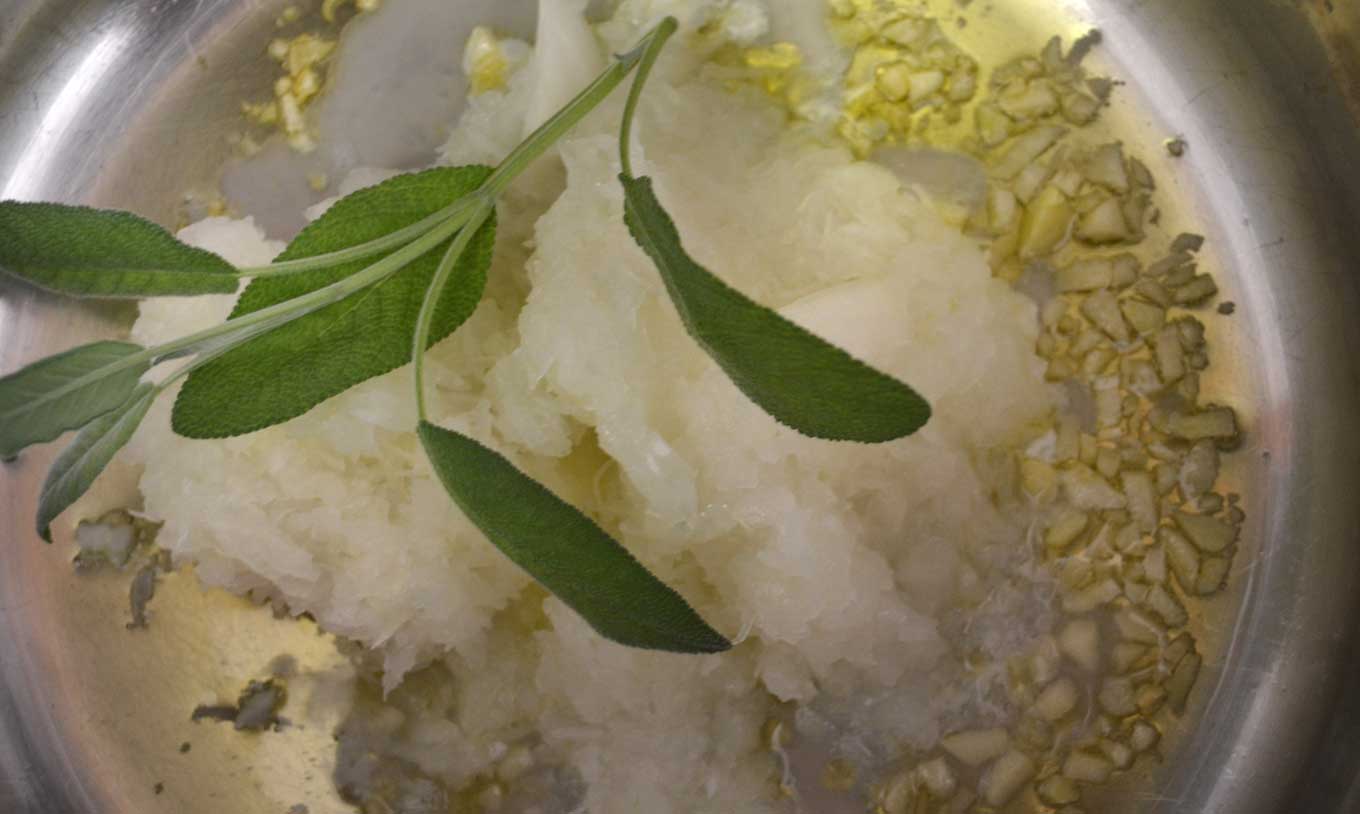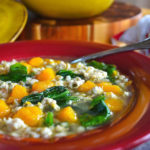
Seasoning food is a lot like raising a well-behaved dog. They both require focus and attention. You can’t ignore a dog as a puppy and expect it to heed your call when it’s fully grown. Each day with that dog requires gentle correcting and lots of love until he learns what’s expected.You can bet that people who walk their dogs off-leash using just voice control have invested lots of time training their beloved pooches. When they hear that whistle, those dogs know exactly what to do. It’s the quality of the process that gets the desired results.

The same goes for food. When you taste a perfectly seasoned braised chicken leg or pasta sauce, you can bet that someone, somewhere tended to it. They tasted it, coddled it and tasted it some more, adding seasoning all along the way. When it appears piping hot on the table, that dish will be the source of sheer happiness and gratification for all involved.
And yet, the idea of seasoning a dish can be a bit mystifying. Every time I read the directive ‘add salt and pepper to taste’ at the end of a recipe, I wonder how helpful it really is and how it translates into people’s finished dishes. I use it myself in my own recipes, by the way, because seasoning a dish is such a personal experience. Everyone is beholden to their preferences and needs, and seasoning becomes quite challenging to define, explain and quantify. It seems to beg for a bit of a road map.
When considering how to properly flavor a dish, I’ve found it helpful to clarify whether we are trying to enhance its flavor or intensify it. It’s important to differentiate between the two. They both boost the flavors in food beautifully, but do so in very different ways.
Seasoning to enhance adds additional flavors, or a new twist, to a main ingredient. It entails using savory condiments like capers, vinegar or mustard. Their inclusion in a recipe gives a dish added brightness, complexity or pungency, all of which elevates flavors to new heights in the palate. For instance, I sometimes add Parmigiano-Reggiano and a little chopped parsley to the breadcrumb mixture of chicken cutlets for a little extra oomph. Another example is adding a couple of anchovies to beef stew, which draws out even more of the savoriness in the meat.
Seasoning to intensify brings out more of the existing flavor of the main ingredient. It involves, quite simply, adding salt. Some people believe this can be done at the table once the dish is cooked, but I think it just makes food taste more salty, not more flavorful.
I find adding salt in small quantities throughout the cooking process to be more effective. It allows me to draw out more of each ingredient’s essence as it also distributes the desired savoriness more evenly throughout the dish. As an added bonus, I find that I use less salt overall.
Take, for instance, a chunky vegetable soup. While adding salt to an individual bowl will give the liquid a one-dimensional salty kick, starchy vegetables like potatoes or squashes remain bland. That’s because they haven’t had a chance to absorb any of the seasoned broth in which they needed to be cooked. When salt is added all along the way, each seasoned ingredient and vegetable builds on each other, adding complexity.
If you are unsure about how to properly intensify flavor, try this approach. Spoon out a small amount and taste it. Then, spoon out another small amount and add three to four flakes of kosher or sea salt. If you find that the flavors seem to ‘pop’ more in your mouth, or if the mere taste brings a smile to your lips, then you know you need to add a little more salt to the pot. Do this throughout the dish’s preparation. The same applies for enhancing the flavors of a dish. Start by adding the flavor-enhancing ingredient a little bit at a time, and taste. Always taste. This process becomes the best insurance policy you’re going to find against a finished dish that’s either bland or too salty.
When we nail the seasoning and dinner’s ready, dogs aren’t the only ones that come when beckoned.
If you don’t see yourself finishing it in one sitting, I suggest you prepare it by cooking the barley separately. Otherwise, once stored for the next day, it will continue to absorb the broth. When you go for the soup the next day, much of the liquid will be gone and you’ll see huge, steroided-out, Michelin-like kernels of barley that could eat you if they were so inclined
making butternut squash, sausage & barley soup
Bring 1 cup barley, 2 1/2 cups broth, and a pinch of salt to a boil. Reduce heat to a simmer; cook, covered, until tender and most of the liquid has been absorbed, 40 to 50 minutes. Let stand 5 minutes. Makes 3-3 1/2 cups.
Prepare a 2 lbs. butternut squash by peeling and cubing it. It will equal about 6 cups.

Prepare the 2 garlic cloves by peeling them and by then removing their little internal green sprout.

In a large soup pot, add 3 tablespoons of olive oil and the chopped garlic cloves and cook on medium-low heat for one minute, or until the garlic just starts to become fragrant. Add a small pinch of salt as the garlic is cooking. Add 1 grated onion (click here for a no-tears way to do it) and 6 fresh sage leaves.

Add a pinch of salt. Sauté until the onion resembles translucent pulp, about 10 minutes.
Add 1 lb. sausage, with casings removed, and turn up the heat to medium-high. Click here for a yummy home-made recipe.
You want to start hearing a gentle sizzle. With a potato masher, break up the sausage so that it looks like ground meat. Add a small pinch of salt. When the sausage is gray, indicating that it is thoroughly cooked, add the cooked barley and sauté for a minute. Add the cubed butternut squash and a little salt.

Mix well.

Cook, covered, for 10 minutes, stirring frequently.
Add 8 cups of chicken broth and bring to a boil.

Depending on how salty the stock you’re using is, add a little salt (or not). Season with pepper. Once the soup is boiling, lower the heat to a gentle simmer. Cook for 30 minutes. Remove the sage leaves.
Add 6 oz. of baby spinach leaves and give the pot a good stir. Check for seasoning. Spoon some of the cooked, room temperature barley into bowls and ladle the soup on top. The heat of the soup will heat the barley right up.
Generously sprinkle with freshly-grated Parmigiano-Reggiano or, if you desire a more piquant experience, grated Pecorino cheese. Makes 8 servings.





Leave a Reply